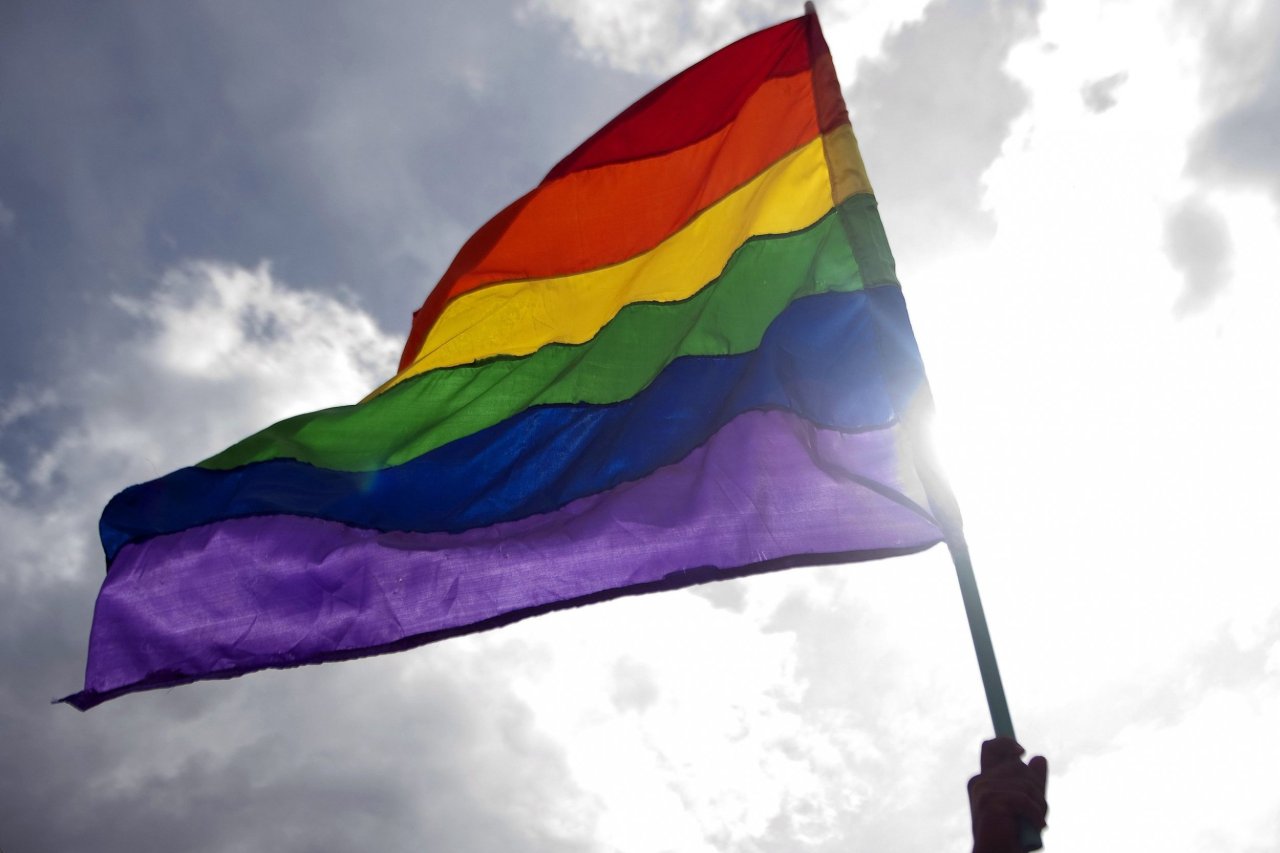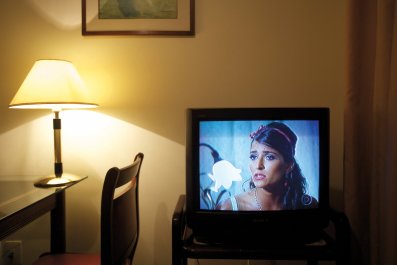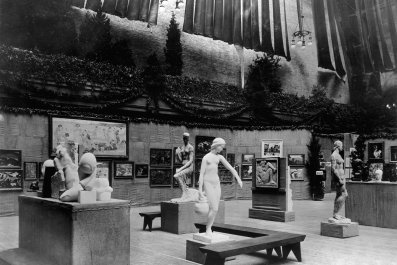This year, the cake mix company Betty Crocker donated custom cakes for the first same-sex marriages in Minnesota. At DC Comics, Batwoman is engaged to marry her longtime girlfriend. Ellen DeGeneres—only 15 years ago jeered as "Ellen Degenerate" for coming out—is the queen of daytime television, where she regularly mentions her wife, Portia de Rossi. She's also a Cover Girl model—the official public face of the Girl Next Door.
You know you've won when the companies that sell to the mass market of middle America are hurrying to show that they're friendly to your cause. But there are many other signs of victory for lesbians and gay men. Only 17 years ago, in 1996, the Defense of Marriage Act was passed to protect the country against "promiscuity, perversion, hedonism, narcissism, depravity, and sin," as then-congressman Gerry Studds summarized what he'd heard during the hearings. Today, any such language would sink the career of a national politician.
Meanwhile, we are speeding toward full marriage rights for same-sex couples throughout the country. This past June, the Supreme Court declared that the federal government must recognize all state-sanctioned marriages, including same-sex marriages, and in a procedural move, flung open marriage's doors to California's same-sex couples as well. Last fall, the citizens of three states passed laws making it possible for same-sex couples to marry, while another two rejected attempts to ban or undo marriage equality. The total number of marriage-equality states is now 13—or 14 if you include New Mexico, where the most populous counties are currently performing such marriages. Realistically, advocates believe they can win another 10 states by 2016.
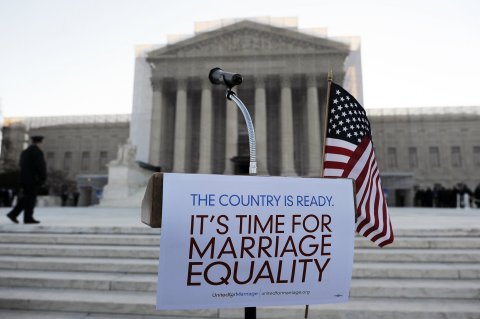
The marriage equality fight isn't over, by any means. The rest of the states, including those most hostile to gay rights, have constitutional or statutory bans on recognizing same-sex pairs. But the momentum is clear to all. Roughly 55 percent of Americans now say they favor legal marriage rights for same-sex couples. Evan Wolfson, founder and president of Freedom to Marry—the national group most involved in winning hearts, minds, legislation, and ballot measures (as opposed to court victories) on marriage equality—recently told me that he believes we will see full national marriage rights within a few years, "if we do the work," as he always adds.
To understate the case, when we win full marriage rights nationwide, it will be a transformative moment, both practically and symbolically. Once our marriages are legally recognized everywhere in the country, lesbians, bisexuals, and gay men—and children just beginning to realize that they might be heading in our direction—will be socially legible as ordinary human beings with the same hopes and dreams as our neighbors. Increasingly, people will get a chance to see how ordinarily boring we are, reducing the stigma attached to coming out as gay. In short, winning marriage means that, more and more, we will have formal equality.
So then what? Should the coalition of lesbians, gay men, bisexuals, and transgender people—the LGBT movement, for short—declare victory and disband? Once we can marry the person whom we love, are we done agitating for political change under the rainbow flag?
In a word, no. For starters, there are still policy areas beyond marriage to take care of. Among the more urgent: passing ENDA—the Employment Non-Discrimination Act, currently being marked up in the Senate—which would add sexual orientation and gender identity to the list of federally forbidden reasons for firing or refusing to hire or promote, a move supported by 80 percent of the nation; battling back against the problematic idea, promoted under the phrase "religious liberty," that anyone with a religious reason for not wanting to treat LGBT folks as fully human should be excused from following anti-discrimination laws; warming up the cultural climate in American regions where attitudes toward us lag; and reaching out internationally to ask those still being disenfranchised and brutalized in other countries and cultures how we can best help.
But beyond these projects, there's a much larger cultural question that deeply deserves our country's attention. It has to do with gender: the way our culture, our politics, and our legal system treats femininity, masculinity, and everything in between.
It may be OK, soon, for a woman to marry a woman and a man to marry a man everywhere in the United States. But it's not even close to being OK for a boy to like Barbies and sparkly pink dresses or to swish when he grows up—or for a girl to be so masculine that people nearly do a double take trying to figure out which sex she fits. It's not OK, yet, for someone apparently born male to grow into womanhood, or for someone who started life considered female to make it clear he's a man. As for the rest of us, we are still, far more than we understand, herded unnecessarily by our sex—by the stereotypes associated with how a woman or a man should act.
It needn't be this way. And if we as a country make the right legal, cultural, political, and educational decisions in the years to come—if we are willing to listen to, and learn from, those on the gender margins—we can make more room for us all.
Unlike the battle over marriage equality, the fight for a different approach to gender will not only or primarily affect lesbians, bisexuals, and gay men. Nor is it, contrary to conventional wisdom, a battle that is only or even mainly about people who are transgender—those whose gender identity differs from their chromosomal sex. It is, rather, a battle that will affect all Americans. And while it can and should be led by the LGBT rights movement, with the transgender faction in particular stepping forward and taking the lead, this isn't our battle alone. This coalition can and should include straight men confined by our society's tendency to tightly patrol gender norms, and straight women who care whether men get involved at home. All of us, it turns out, will better thrive as our society opens its mind to a different way of thinking about gender.
What I'm describing—a larger direction in which I believe the LGBT movement is turning next—won't be easy. But it's crucially important. And I have no doubt that, as with the battle for same-sex marriage, breaking the nation out of its gender straitjacket is a fight we can win.

ONCE UPON a time in Western culture, what made you queer wasn't the sex of the person you desired; it was, rather, the sex you appeared to be. Think of queer identity as existing along both an X axis (sexual orientation) and a Y axis (gender expression). For the past generation, the X axis has dominated our discussion of LGBT rights. That wasn't always the case.
In the late 19th century, effeminate men, called "fairies," and "mannish" women were identified by sexologists as "inverts" or a "third sex." The fairies consorted with masculine men who weren't themselves tainted by having sex with men. The same was true for women: the very masculine writer Radclyffe Hall was considered an invert, but not her more conventionally feminine (and otherwise heterosexual) girlfriends.
Many cultures invent a third gender for boys who like everything girly, a category that allows them to live like women—wearing women's clothes, doing women's tasks, pairing up with ordinarily masculine men who do not change status or identities just because they're with these differently gendered men. On the Indian subcontinent, this group is called the "hijira" or "hijra," and it has its own gender category on identity documents and passports in India, Nepal, and Pakistan. In Samoa, this gender is called the "fa'afafine"; for some Native American cultures, it's the "two-spirit." Among Samoans, boys who show an interest in girls' things are moved over into the category of "fa'afafine" as children (the word literally means raised and living "in the manner of women"). Our culture didn't, and still doesn't, have any such clearly defined third gender category. But for a long time, it was along the Y axis of gender that you were designated as queer.
Around 1920, for complex historical and economic reasons, Western culture began putting sexual attraction at the center of its view of the world. From Margaret Sanger to Sigmund Freud, from the flapper to the matinee idol, sex and reproduction were becoming unmoored from one another. As capitalism kept spinning work farther away from home, gender was ceasing to be the way a married couple divided up the tasks of their shared business. What was left? Desire. The concepts of heterosexual and homosexual were invented—i.e., the words and ideas first appeared—during that era, as the new sexologists (called psychiatrists) started designating people as queer by the X axis, the sex of the person you desired, rather than by the Y axis, how closely your gender matched your sex. Instead of Radclyffe Hall the invert and her non-inverted girlfriends, we had Gertrude Stein the lesbian and her equally queer partner Alice B. Toklas. Stein's masculinity, however obvious, was remarked upon as an indicator of her homosexuality, not as the queerness itself.
Gender identity (your internal sense of whether you're a girl or a boy) and gender expression (how you walk, move, and talk) emerges and is relatively fixed by age 5.
In my generation, many of us first felt different—queer, if you will—not when we noticed our feelings of attraction but rather when we started realizing that our masculinity or femininity was mismatched with what others expected from our birth sex. We were often girls who preferred boys' games and clothes and friendships, or boys who played house and got mistaken for girls. Not everyone who would grow up to be lesbian or gay fell into this category, of course—and often, bisexuals felt no such variation in their gendering—but I'd be happy to bet that at least four out of five did. And because "lesbian" and "gay" were the identities we had available to us once we fell profoundly into attraction or love, we tended to look back and interpret our odd gendering not primarily as differences along the broad human range of femininity or masculinity, but as early signals of the gayness to come.
During the 1970s and '80s, both gay men and lesbians, in our separate communities, worked toward gender uniformity, albeit differently within each subculture. Without much discussion, each culture downgraded femininity, as if that signaled weakness, and each developed a standard image of what one of "us"—a lesbian woman or a gay man—should look like. Lesbian feminists pushed each other toward what we called the "androgynous" look, rejecting as sexist the butch-or-femme roles of the generation immediately before ours. Our uniform mandated no makeup, short hair, hiking boots, jeans or overalls, plain shirts, and wallets in our back pockets. Gay men, meanwhile, adopted what was called the "clone" look of exaggerated masculinity: going to the gym, growing mustaches, and generally butching up, as if to be ready at long last to beat up the tormentors of their youth; picture the Village People going to the YMCA. As with any generalization, there were of course individual exceptions, but they often found themselves outcasts. The "passing" woman, the femme in her heels, the drag queen at her balls—all were, for roughly a decade, far less welcome within our communities.
BUT REJECTING gender variation turns out to be constricting, just as constricting as being confined by one that doesn't fit; the identity box of no boxes is as drab as a Maoist uniform, and just as tediously uncomfortable. The truth is that some of us—gay or straight, male or female—are more or less masculine or feminine than other members of our biological sex and than other members of our sexual orientation. And the Y axis, the gender spectrum, is just as genuinely felt as any other human variation, whether that's sexual orientation or being interested in math and science instead of literature and art. Gender identity appears to emerge naturally, even when it's not an exact fit with bodily sex; people feel it keenly. Trying to erase it takes too much work.
The latest science suggests that gender, like the rest of our neurologically formed identities, results from a complex interaction of nature, nurture, and culture. The hormone bath with which we're washed in utero, the way our bodies and character are formed by our genetic and epigenetic expressions, the experiences we have in childhood: no one knows exactly how these mix to give us the sense of whether we need to swagger or sway when we walk. All we know is that the "right" mix of gender can't be violated without serious psychic damage. Gender identity (your internal sense of whether you're a girl or a boy) and gender expression (how you walk, move, and talk) emerge and are relatively fixed by age 5, researchers now say; by age 11 or 12, if a child is still insisting on a trans identity, that's almost certainly going to persist. Trying to undo that is as brutal as trying to undo later sexual orientation (which our nation has now rejected), and it results in increased risks of drug and alcohol abuse, depression, suicide attempts, and so on.
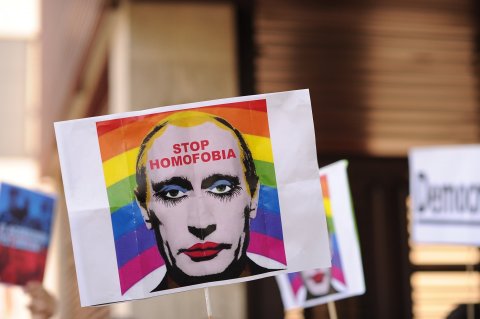
Consider a case from the 1960s and '70s in which a psychologist and researcher named John Money intervened after a botched circumcision left a boy without a penis. Money worked with the family to get the boy hormone treatments and reassign him as female, and reported for decades that the child he called "Joan" grew up successfully as a girl. It was a story that portrayed sex and gender as independent, with the latter socially constructed, a view that fit the era. But in the 1990s, the true story came out: "Joan" had never accepted a female gender identity, and by the age of 13 was threatening suicide if he had to continue life as a girl. For Joan—David Reimer, who later told his story with John Colapinto in As Nature Made Him: The Boy Who Was Raised as a Girl—his gender identity was consonant with his chromosomal sex. The moral of the story was that gender is not, in fact, infinitely flexible; rather, we all have a somewhat innate sense of where on the gender spectrum we belong.
And for whatever reason, variation on both the X and Y axes—the sexual orientation axis and the gender axis—tends to be deeply intertwined. It's not a mistake that Gertrude Stein was so masculine, or that Alice B. Toklas wasn't exactly feminine. As with the fa'afafine or hijra, American boys who swish, want sparkly clothes, and like girly toys tend to grow up to be attracted to men, especially masculine ones. Girls who walk and throw like boys tend to grow up to be attracted to women, especially those who tend to be slightly more feminine. And yet American culture has been trying to accept the one without the other. Think about the star-crossed lovers in Brokeback Mountain: those two cowboys were as stereotypically masculine as Marlboro Men. The culture has embraced our difference on the X axis without fully embracing our variation on the Y.
Indeed, our culture hasn't yet embraced those for whom the Y axis variation is the most pressing: members of the transgender community, who are about 0.3 percent of the population, or 700,000 Americans, according to the Williams Institute. The doctors and surgeons who first guarded the gender-transition gates, back in the 1950s, '60s, and '70s, offered sex-reassignment surgery only to those who agreed to espouse a very strictly defined (and now dated) narrative: woman trapped in a man's body who wants to be stereotypically feminine and serve her man dinner every night. But not every transgender person cared about becoming heterosexual; some wanted to remain married to their spouses, even if in the post-transition configuration they'd present as gay.
At first that weirded doctors out. But beginning in the 1980s and accelerating in the 1990s, transgender folks found each other, especially on the nascent Internet, which enabled them to compare notes without medical intermediaries reinterpreting their stories—and allowed them to develop their own identities. In that period, the transgender column rejoined the rainbow movement, insisting themselves back into the circle from which they'd been rejected for nearly 30 years. As time went on and the lesbian-and-gay-rights movement won more ground, gender clinics began accepting that while the Y axis and X axis were related, they were not identical: you could transition from male to female, or from female to male, even if that resulted in slotting you as gay.
At the same time, younger lesbians began aggressively asserting more gendered identities. Dresses and makeup reemerged among some—often paired off with gals in suits and ties. Some subset of butch lesbians, meanwhile, realized that simply being masculine wasn't enough; they needed the rougher skin, absence of breasts, and other accoutrements of the male body to feel truly like themselves. RuPaul and other drag queens grabbed public status as "fabulous," while Queer Eye for the Straight Guy and other spots in pop culture capitalized on gay male stereotypes not as weaknesses but strengths.
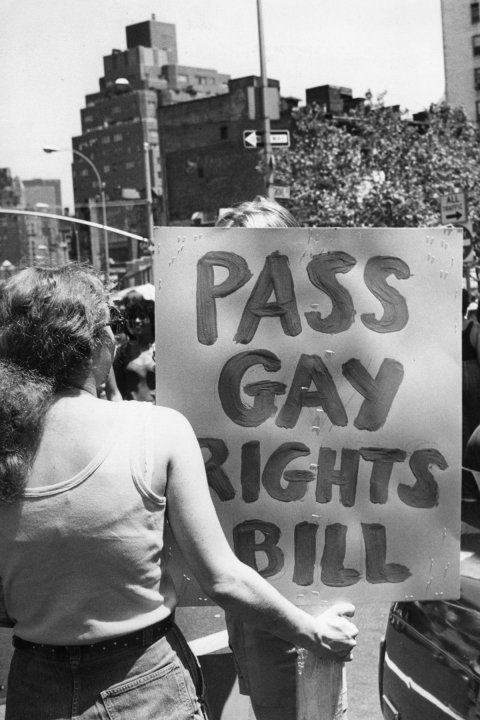
Yet whatever the sexual orientation it accompanies, gender nonconformity still alarms a lot of Americans—so much so that the gender nonconformists among us are the ones most likely today to face the harsh attitudes and language once aimed at lesbians and gay men. Some women remain so butch, and some transwomen so tall and strong, that they set off a panic when they walk into the women's room. Some boys, men, and transwomen (especially those of color, who face the most brutal treatment) are ridiculed, taunted, and beaten—at times "tortured" isn't too strong a word—for the timbre of their voices and the lightness of their gestures. The idea that transgender children and adults should be able to pick the bathrooms and sports teams where they feel comfortable is treated as the same kind of violation of nature that once greeted two women or two men holding hands.
This discomfort can be deadly. Transgender folks feel so profoundly, so disturbingly at odds with their originally assigned sex that they must shift to the one they know themselves to be—or life isn't worth living. I mean that literally: 41 percent of 6,450 transgender and gender-nonconforming adults recently surveyed jointly by the National Center for Transgender Equality (NCTE) and the National Lesbian and Gay Task Force (NGLTF) said they had attempted suicide, with numbers going up when they'd been assaulted, fired, disowned by families, or faced some other life-changing rejection based on gender. Another Y-axis subgroup call themselves "gender nonconforming," meaning that they're notably too butch or too fey for their sex. And all of them are in more danger than gender-passable lesbians or gay men. According to a 2011 survey by the Gay, Lesbian, and Straight Education Network (GLSEN), 80 percent of transgender students (K–12) felt unsafe because they were transgender; 67 percent of nontransgender gay male students felt unsafe because they were gay; and 60 percent of lesbian students felt unsafe because they were lesbian. Meanwhile, 45 percent of gay males and 35 percent of lesbians said they were harassed based on gender expression. Transgender students clearly have it worst—while, not surprisingly, girls have the most room to vary.
Though GLSEN is seeing a slight drop in "that's so gay" and other slurs about sexual orientation over the past 10 years, the group reports no such drop in slurs on gender expression. And let's be honest: even the playground slur "that's so gay" is often less about sexual orientation than it is about gender. Are 6- and 8- and 10-year-olds being taunted for dating other boys? Hardly. They're being patrolled for deviation from masculinity and punished for acting like girls, whether that's stepping back from a fistfight or tilting their heads when they talk. And their punishment is far worse than what happens to tomboy girls.
The American gender patrol, in other words, is much more worried about maintaining boys' and men's masculinity than about policing female behavior. I remember when, back in the 1970s, I was, as a girl, first allowed to wear pants to school—an outward signal that more and more we would be permitted to take up men's previously hoarded privileges. In the intervening decades, the women's movement has made it progressively more acceptable for girls to act in ways that used to be reserved for boys. Boys have gained no such deviations. Girls and boys play in the same sports leagues, up until puberty hits and testosterone-fueled muscles raise the stakes. But while girls are now lauded for being athletic, boys who take up ballet or figure skating are still belittled or worse. Why? If girls can get muddy, wear boys' clothes, and play soccer if they want to—"if they want to" being the operative phrase—why shouldn't boys be permitted to wear toenail polish, necklaces, or tutus?
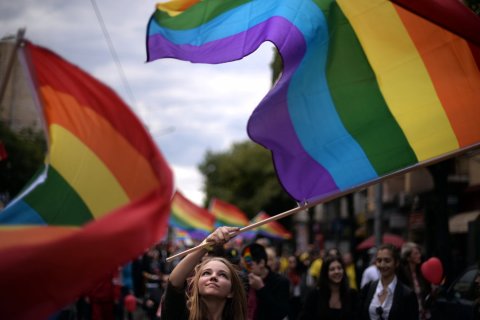
If anything, gender is patrolled even more ferociously into adulthood. In the survey of 6,450 transgender and gender nonconforming adults, nine out of 10 said they were harassed while on the job because of gender identity. And nearly half—47 percent—said they'd been fired, not hired, or refused a promotion because of gender identity. That's the kind of reaction lesbians and gay men used to get for coming out (and still do, especially in some regions, though not as much anymore). As a result, transpeople who transition as adults have double the rate of unemployment and poverty of the general population, with one fifth having been homeless. The FBI's uniform crime statistics report on hate crimes shows that of the 6,216 hate crimes documented in 2011, the most recent numbers currently available, 20.8 percent were attributed to sexual orientation. But how many were really because of sexual orientation, and how many were actually because of gender variation? We'll find out soon: the 2009 Matthew Shepard and James J. Byrd, Jr. Hate Crimes Prevention Act mandates collection of data on gender identity as well, but changing the nation's data collection machinery has taken time, and we won't get that data until the reporting from 2013. Until then, my hunch is that, just as with the playground taunts, some very large percentage of the men were targeted more because they were too girly than because they were perceived to be interested in dating men.
Consider what happened to Vandiver Elizabeth Glenn, born Glenn Morrison, who was fired from her job as an editor in the Georgia General Assembly's Office of Legislative Counsel in 2007, after she began to transition. According to the 11th Circuit's 2011 decision in the case, her supervisor "stated that 'it's unsettling to think of someone dressed in women's clothing with male sexual organs inside that clothing,' and that a male in women's clothing is 'unnatural.'" When Glenn went ahead, the supervisor fired her, saying that transition "was inappropriate, that it would be disruptive, that some people would view it as a moral issue, and that it would make Glenn's coworkers uncomfortable." Unnatural, inappropriate, disruptive: does that remind you of the sentiments expressed in the hearings that led to the Defense of Marriage Act? Glenn found justice, eventually; in a summary judgment ruling, the trial court judge found in her favor on sex discrimination, which the 11th Circuit upheld. But why must gender shift elicit such recoil? Who is it hurting, really?
Let me be clear that I am not arguing for a unisex world. Far from it. Masculinity and femininity, male and female, are deeply natural, and here to stay, although they're not always a perfect fit.
TODAY'S LGBT youngsters are becoming aware of their differences earlier and more organically. They're recognizing the implications of their gender variations as early as third grade, and coming out as early as fifth grade—developing their identities and attractions at the same appropriate developmental stages as their nonvariant peers. As they grow into young adulthood, they are having an entirely different conversation about those identities than my generation did. They mock the old "L/G/B/T" boxes as fuddy-duddyish. Instead of focusing only on sexual orientation, they're more aware that gender and orientation are often woven together as a single package. More and more, they are making it clear to us old folks that their gender identity is foundational.
When I talk with advocates running various outposts of the rainbow movement, they all tell me that some different way of organizing sex and gender identities is coming, although no one seems to be able to articulate quite what it is. Those in the next generation are having a conversation among themselves—and with their nongay, nonvariant ("cisgender" is the term of art, meaning identifying and presenting in a gender consistent with the sex assigned at birth) friends—that grows from different influences than my own. They will create identities that are more consonant with that earlier gendered sense of self, where orientation isn't the lodestar that my generation takes it to be.
To get to those new identities without mangling the children currently traveling through the system, we urgently need to make the world safer for the gender variations emerging now. Caitlin Ryan, one of the founding researchers of the visionary Family Acceptance Project (FAP), told me, "We've made a mistake by waiting until kids come out" to try to support them with such projects as the (brilliant) "It Gets Better" campaign. "Everybody has a gender expression, starting from when they were little kids." Which means we should be seeking, as FAP does, to make sure that all families, and every organization and profession working with families—from pediatric nurses to teachers—have the data and language to "help you understand that gender diversity is normative, not something to be ashamed of. You can't change how your child walks, moves his hands, or the timbre of his voice. If you try to change that, here are the bad outcomes and health risks he faces as a young adult."
But better supporting gender-variant children is merely the beginning of the changes needed to help those who vary on the Y axis—and to make room for larger ways for the rest of us to be women and men. As a country, we need to reevaluate how strictly our nation organizes every activity by sex and gender, from having separate activities in school for girls and boys, to putting M or F on our driver's licenses and other ID cards when pictures reveal identity just fine, thank you. It means really living up to the 1964 Civil Rights Act's ban on discrimination by sex, and refusing to arbitrarily segregate the world by boys and girls, women and men.
For instance, in Massachusetts, one of the states leading on protecting gender identity under anti-discrimination law, the state's education department has released a detailed white paper on how to protect gender-nonconforming children, asking schools to scrutinize—strictly—any policy that's based on gender, keeping "only those that have a clear and sound pedagogical purpose." Look around and you'll find some that manifestly do not, such as gendered dress codes for the prom or different color graduation gowns for girls and boys—which not only make life unnecessarily hard for the transgender or gender nonconforming student but also send the implicit message that boys and girls have separate destinies.
Carolyn Laub, founder and executive director of the GSA (Gay-Straight Alliance) Network, told me about one California school where a transgender student was distressed by the fact that in every learning game, classrooms were divided up into boys against girls. According to Laub, another transgender child attended a school where, in gym, activities differed by sex: girls took yoga while boys took soccer. Seriously? Are we still back in the pre–women's movement era, when girls weren't supposed to be competitive? How do divisions like that help children learn? Why not offer both yoga and soccer, and let the children pick which one they prefer—just as we can once we're adults?
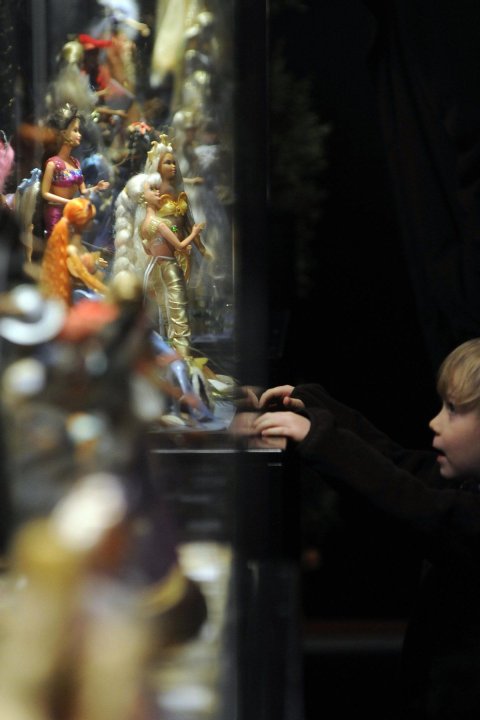
Feminists long ago began questioning sex segregation. They made a start with such advances as Ruth Bader Ginsburg's 1996 Supreme Court decision putting an end to the Virginia Military Institute's reflexive exclusion of women. We need the same principles all the way through society, getting rid of gender distinctions that aren't strictly necessary. For example, instead of deciding that some men and no women can be firefighters or Marines, we now set out tests for the necessary qualifications, and see which men and which women meet them. It's time to extend that approach beyond the job market into every incidence of marking off activities by gender. In each case, we need to ask, is there a real reason to keep the sexes separate, or is it just custom? Even in some cases where we may assume there is a good reason, closer scrutiny might cause us to rethink. In bathrooms, for instance, stalls can offer everyone safety and privacy as they pee; family and handicapped bathrooms offer privacy for those who need it. Yes, women rightly fear sexual violence, and are profoundly trained in staying alert for male bodies where we feel vulnerable. But transwomen aren't the ones we need fear. So why, aside from tradition, should we continue to insist on strict separation between male and female bathrooms?
Let me be clear that I am not arguing for a unisex world. Far from it. Masculinity and femininity, male and female, are deeply natural, and here to stay, although they're not always a perfect fit. No matter what, the vast majority of those born male will tend to be both heterosexual and at least somewhat masculine, and most of those born female will grow up to be heterosexual and at least somewhat feminine. I have no interest in taking away the Barbies or the trucks; I just want to be sure every child can choose the one they prefer without setting off a gender panic about the rest of their lives.
What I'm suggesting, in short, is that our society needs to be less strict about policing the variations and manifestations of gender—and open the door to let boys in particular widen their interests. I'm suggesting that, just as we've come to accept that some minority of us are attracted to and fall in love among our own sex, it's time to accept that some XY people are only going to be happy as women, and some XX people are destined to be men. Whom does it hurt if a football-playing boy also loves knitting with his grandmother, or if a dad is the one who most wants to be home to meet the kids? Whom does it hurt if a girl has no patience for playing house and would rather be in the sandbox with the boys building a make-believe rocket ship?
The point is not to erase masculinity and femininity in some utopian vision; I've tried that and have gotten a great deal of joy from returning (at least sometimes) to mascara and skirts. Rather, it's to permit access to it all to whoever wants to reach for it, regardless of sex or gender.
If we are lucky, this next phase of the rainbow revolution will make room not just for the transgender and gender variant, but also for straight and gender-consonant boys and men—and the girls and women who live with them. Right now, boys are still raised with the idea that they have to button it all up. They can't express compassion. They can't be soft. Man up. Boys don't cry. But we lose a lot of humanity by forcing boys into the masculinity vise. Yes, it especially hurts transgender children and boys who will grow up to be gay, but it hurts all boys and men, leading to bullying, cruelty, mockery, and serious failures of empathy. Sexual violence has been linked to this toxic masculinity that permits no vulnerability.
The beauty, in the end, of this next phase of the movement under the rainbow flag is that it can potentially benefit everyone. That's because, at its heart, the gender border patrol is an attempt to keep us more fully divided by sex than is truly natural. Social conservative crusader Phyllis Schlafly, it turns out, was right when in the 1970s she warned that if the Equal Rights Amendment were ratified, we'd have homosexual marriage, women in combat, and unisex bathrooms. The ERA was never ratified, but the country took many of its lessons to heart. Here's what Schlafly got wrong: those weren't things to warn against but to embrace.
E.J. Graff, a Brandeis Women's Studies Research Center resident scholar, is the author of What Is Marriage For? The Strange Social History of Our Most Intimate Institution.



